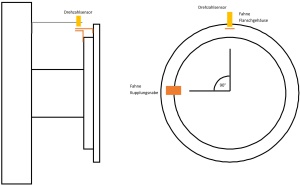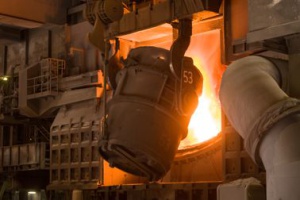-
Entry date 27.01.2025
Drum coupling monitoring - Automatic condition monitoring on cranes

-
Entry date 18.10.2024
Condition Monitoring and Artificial Intelligence

-
Entry date 15.12.2023
Condition monitoring at maintenance Dortmund on February 21st and 22nd, 2024

-
Entry date 22.08.2023
Condition Monitoring at HUSUM WIND 2023

-
Entry date 16.06.2023
Is condition monitoring even worth it?

-
HUSUM WIND 2025
16.09.2025 - 19.09.2025
-
maintenance Munich
29.10.2025 - 30.10.2025
Condition monitoring at HUSUM Wind 2021
Advanced algorithms make drives even more reliable
In the mid-1990s, the first machine diagnostic measurements were carried out on wind turbines. When insurers complained about more and more unexpected claims in the early 2000s, machine diagnostics with mobile technology quickly established itself as an additional tool for experts who carried out the recurring inspection. This was followed by online condition monitoring systems in the mid-2000s. Today, the operator often has the choice between various online systems and mobile diagnosis by experts.
There was a similarly rapid development in the condition monitoring systems themselves. Parameter monitoring has been known since the 1960s, but frequency-selective machine diagnostics only became established in the early 1990s. While the techniques were known beforehand, there was simply a lack of affordable, portable technology. Higher resolution in the spectra and variable-speed drives led to the need for diagnosis in order spectra from the 2000s onwards. At about the same time, algorithms for the automation of machine diagnostics prevail; because only automatic systems that work with little personnel effort will create acceptance for the mass use of machine diagnostics.
HUSUM Wind is traditionally an event at which the properties of condition monitoring systems are questioned by operators. And this is regularly a very difficult task for many operators, because the algorithms used are mostly the know-how of the respective CMS provider. There are also technical guidelines only for basic connections.
The systems offered by GfM all work on the basis of vibration signals recorded at 50 kilohertz, which are processed by resampling to form order spectra with at least 32,000 lines. The automatic diagnosis is then carried out by detecting significant spectral components, for which an attempt is then made to assign them to a damage pattern based on the kinematic frequencies. Only when this succeeds do the systems deliver a detection that is the basis for a later alarm.
Especially in the field of relevant damage patterns, GfM has learned a lot in recent decades and implemented this knowledge in the systems. While in the 1990s the search was often only for the calculable kinematic frequencies, or possibly also their multiples, today we know that some damage is only expressed in higher-harmonic families of the kinematic frequency. Slow runners also behave differently than fast runners.
Due to this knowledge, which is tied to fixed algorithms, the systems of GfM impress with their extremely high reliability, which also means that the number of false alarms is extremely low. Finally, the latest addition is an automatic report generator. A module for multi-level operational balancing at variable speeds has also been added to the mobile system.
We invite you to talk to us in detail about the technical possibilities of our systems. You will find us at HUSUM Wind in Hall 5, Stand 5B39.
Archive - 2025
-
Modified date 2025/01/27
Drum coupling monitoring - Automatic condition monitoring on cranes
Archive - 2024
-
Modified date 2024/10/18
Condition Monitoring and Artificial Intelligence
Archive - 2023
-
Modified date 2023/12/15
Condition monitoring at maintenance Dortmund on February 21st and 22nd, 2024
-
Modified date 2023/08/22
Condition Monitoring at HUSUM WIND 2023
-
Modified date 2023/06/16
Is condition monitoring even worth it?
Archive - 2022
-
Modified date 2022/07/05
Analysis of the foundation movement on wind turbines




